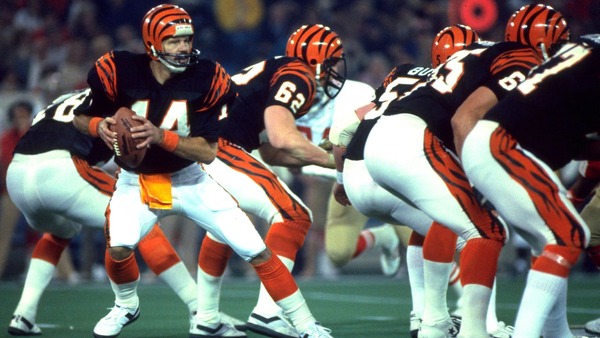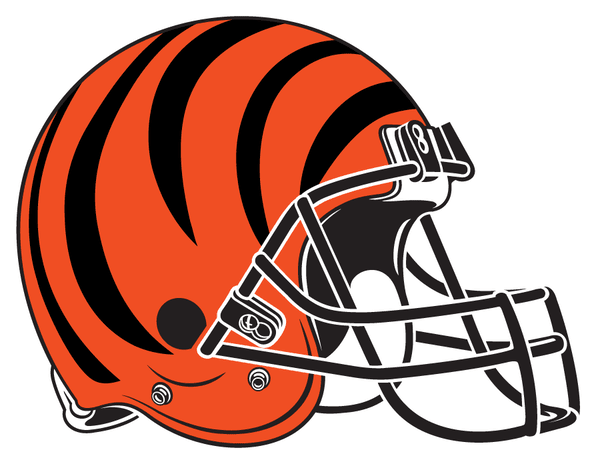The Cincinnati Bengals joined the American Football League (AFL) in 1968 as the 10th and final team in the league; they later would become members of the NFL when the leagues merged in 1970, The driving force behind the new team was Paul Brown, the legendary coach of the NFL Cleveland Browns. Whether driven by revenge, or simply a love for the game, Brown was interest in the establishment of another NFL franchise in Ohio after being fired by Browns owner Art Modell.
Initially, Brown considered both the city of Cincinnati as well as Columbus. When he found out that the baseball Cincinnati Reds were in the process of getting a new stadium to replace Crosley Field, the choice of where to go became easy.
Before the Bengals, there was professional football in the city – the Cincinnati Celts of the American Football Conference in 1934 and the Cincinnati Reds of the same league played football from 1933-34.
History behind Color Scheme
In choosing the color of the uniform, Brown chose colors that were similar to that of the Browns, further fueling the idea of what motivated Brown in coming to Ohio. In trying to explain the similar color schemes, some have said that Brown was paying homage to the Massillon, a city in Ohio. The high school’s football team, the Tigers, have a uniform color scheme of orange and black, nearly identical to that of the Cleveland Browns.
While the Bengals have been to three Super Bowls, since its inception, their record while perhaps not futile, has been underwhelming. They made their first Super Bowl appearance in 1982, losing a heartbreaker to the San Franscico 49ers as quarterback Joe Montana engineering a drive in the last minutes of the game to win, 26-21. While the Bengals may not be known for their football excellence, the contributions from the city to the game of football are quite remarkable. The game featured two teams employing the West Coast offense.
Designed by Bill Walsh, while an assistant coach for the Bengals from 1968 – 1975, the concept utilizes a high-percent passing scheme. Bengal quarterback Ken Anderson finished the game completing 25 of 34 attempts for 300 yards and two touchdowns. His 73.5 completion percentage at the time was a Super Bowl record. Walsh, the head coach of the wining 49ers, saw his quarterback, Joe Montana, complete 14 of 22 passes for 157 with one touchdown and one touchdown on the ground. More importantly, Montana had no interceptions, while Anderson had two.

Return to the Super Bowl
Anderson, who was drafted by Paul Brown in 1971 and installed as starting quarterback in 1972, made four trips to the Pro Bowl, won four passing titles, was named NFL MVP in 1981, and set the record for completion percentage in a single season in 1982 with 70.66%.
The Bengals returned to the Super Bowl in 1989, losing to the San Franscico 49ers again. League MVP Boomer Esiason was the quarterback, while running back Ickey Woods led the ground attack. The Bengals utilized a No-huddle offense, a revolutionary concept for its time. Similar to a fast break in basketball, teams commonly used a No-huddle offense when it was late in the game, as one’s team was trying to catch up.
Head Coach Sam Wyche, along with offensive coordinator Bruce Coslet made the high-paced offense a staple for the entire game. By setting up for the next play – often within 5 to 10 seconds instead of using their allotted 45 seconds – the Bengals did not allow the other team’s defense substitute situational players, and thus were able to create personnel mismatches on the field. Marv Levy, the head coach of the Buffalo Bills, would expand on the concept with great success as the Bills went to four consecutive Super Bowls using a No-Huddle offense.
The Bengals have played at three Stadiums – Nippert Stadium from 1968 – 1969, Riverfront Stadium from 1970 – 199 and their current home, Paul Brown Stadium since 2000. Nippert Stadium, the home of the University of Cincinnati football team since 1901, is the second-oldest playing site in the nation for college football, only behind Penn’s Franklin Field (1895). With an initial seating capacity of 12,000, the latest renovation (2015) brings the seating capacity to 40,000. The Bengals current stadium, Paul Brown Stadium, has a seating capacity of 65,515.
The Zone Blitz
Another innovation that came out of Cincinnati was the Zone Blitz. A defense created to combat the West Coast offense, Bengals defensive coordinator Dick LeBeau, (who later served as the team’s head coach from 2000 – 2002) created the concept.
From 1991 to 2005, the Bengals suffered the longest streak without a playoff win in NFL history, failing to win a playoff game for 14 consecutive seasons.
The Cincinnati Bengals currently play in the American Football Conference (AFC) North Division along with the Baltimore Ravens, Cleveland Browns, and Pittsburgh Steelers.
Most recently the Bengals played in Super Bowl LVI in 2022 losing to the Los Angeles Rams by a 23-20 score. Key players on the team include quarterback Joe Burros and wide receiver Ja’Marr Chase.
Barry Schustermann
Follow me on X @BarrySchust
Follow me on Facebook @ Barry Schustermann



